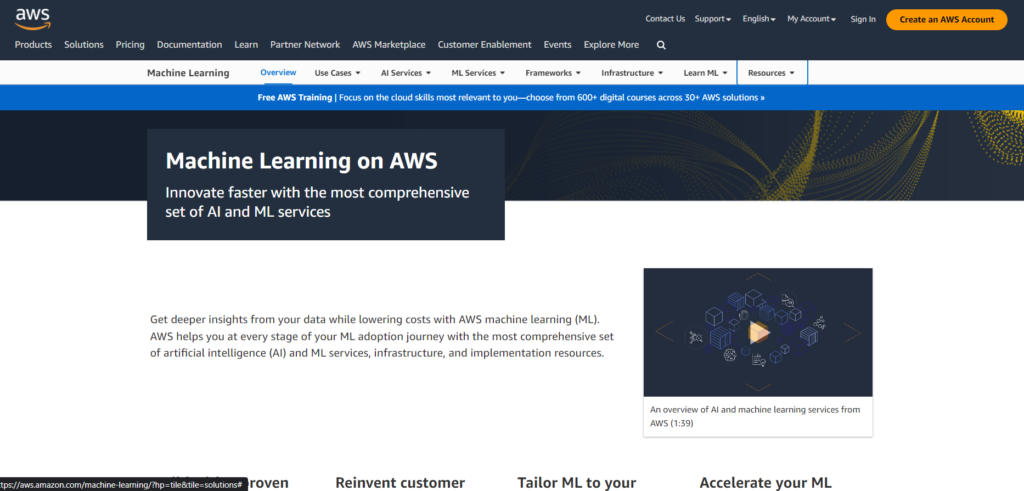As more and more companies embrace the cloud, Amazon Web Services (AWS) has become a leading provider of cloud computing solutions. AWS offers a wide range of services that help businesses optimise their operations and infrastructure, and one such service is Amazon Machine Images (AMI).
An AMI is a pre-configured virtual machine image used to create new instances in the cloud. It comes with an operating system, pre-installed applications, security settings, and other customizations that are ready to be deployed. This makes it easier for businesses to spin up new instances quickly and efficiently. In this article, we will explore the various ways in which you can leverage AMI in your AWS deployment strategy to maximise its benefits and minimise costs.
What Is AMI And Why It Matters?
AMI stands for Amazon Machine Image, a pre-configured virtual machine image that can be used to create instances in the cloud. It is a vital component of AWS deployment strategy because it provides a fast and efficient way to launch new instances with the same configuration as the original instance. This helps simplify the deployment process and enables developers to quickly spin up new instances when needed.
One of the primary benefits of using AMI is its ability to save time during deployment. Instead of manually configuring each instance, AMIs allow users to automate their deployments using templates or scripts. This not only speeds up the process but also reduces errors caused by manual configuration.

Another advantage of leveraging AMI is its flexibility. Users have complete control over their images and can customise them according to their specific needs. They can add software packages, change configurations, and perform any necessary updates before creating an image that can be easily replicated across multiple instances in different regions or availability zones within AWS.
Understanding The Basics Of AMI
AMI or Amazon Machine Image is a pre-configured virtual machine image, which serves as a template for creating multiple instances of the same configuration. It is an essential part of AWS and allows users to quickly spin up new instances with specific operating systems, software configurations, and application stacks.
Creating an AMI involves launching an EC2 instance, customising it as per requirements, and then saving its current state as a new image. This image is stored in Amazon S3 and can be used to launch new instances on-demand. AMIs are available for various operating systems such as Linux, Windows, and macOS.
One of the benefits of using AMIs is that they reduce the time required to deploy new instances significantly. They also provide consistency across all instances launched from the same image. Additionally, AMIs can be shared between accounts or made public on AWS Marketplace for others to use. Understanding the basics of AMI helps in leveraging them effectively in your AWS deployment strategy.
Benefits Of Leveraging AMI In AWS
Leveraging Amazon Machine Images (AMI) in AWS provides several benefits. AMIs allow for easy and quick replication of virtual machines, reducing the time required to set up new instances. This can be especially useful in instances where a large number of identical virtual machines are needed.
Moreover, with AMIs, users can customise their virtual machines according to specific needs and preferences. This allows for more optimised performance and better resource utilisation. Additionally, AMIs provide a level of consistency across different environments, which is especially important for organisations with multiple teams working on different projects.

Lastly, leveraging AMI in AWS enables organisations to reduce costs by only paying for the resources they use. By creating custom images tailored to their specific needs, users can avoid overprovisioning resources and save money on unused storage or computing power. Overall, AMI offers several advantages that make it an ideal solution for optimising cloud infrastructure deployment strategies in AWS.
How To Create Custom AMIs For Your AWS Environment?
Creating custom AMIs (Amazon Machine Images) is an essential skill for any AWS user looking to streamline their deployment process. These images are pre-configured virtual machine templates that simplify the process of deploying new instances in your environment. By creating a custom AMI, you can include all of the necessary software, configurations, and data required for your application or service to run properly.
To create a custom AMI, start by launching an instance from an existing Amazon-provided image or one of your own previously created ones. Once you have launched the instance, install and configure any additional software required for your specific use case. After ensuring everything is set up correctly, stop the instance and create an image from it using Amazon’s EC2 Image Builder tool.
With your new custom AMI created, you can then deploy it to any number of instances in your environment with just a few clicks. This streamlined process saves time and ensures consistency across all instances in your infrastructure, reducing the risk of configuration errors or inconsistencies causing issues down the line. By mastering the creation of custom AMIs, you will be well on your way to implementing a successful AWS deployment strategy.
Conclusion: Maximising Your AWS Deployment With AMI
In conclusion, leveraging AMI in your AWS deployment strategy can help you maximise the potential of your cloud infrastructure. By customising and creating your own AMIs, you can save time and effort in spinning up new instances, as well as ensure consistency and security across your organisation.

Moreover, using pre-built AMIs from trusted sources such as AWS Marketplace or community-driven repositories like those hosted on GitHub allows you to quickly provision complex software stacks without having to configure them manually. This not only streamlines the deployment process but also helps reduce the risk of errors.
Ultimately, a well-designed AMI strategy can help you achieve greater agility and flexibility in managing your AWS resources while minimising costs and improving overall performance. Whether you are running a small startup or a large enterprise workload, leveraging AMI is an essential tool for maximising the benefits of cloud computing.
Author Bio
Shahanaaz Begum Shaik is a technologically savvy SEO Research Analyst. I am passionate about researching various technologies, startups, and big dreams in order to achieve various goals. I have extensive experience presenting information on market-leading technologies such as AWS, PeopleSoft, Informatica, Tosca, and others.
To Read More Tech Blogs Visit: Technical Nick

















